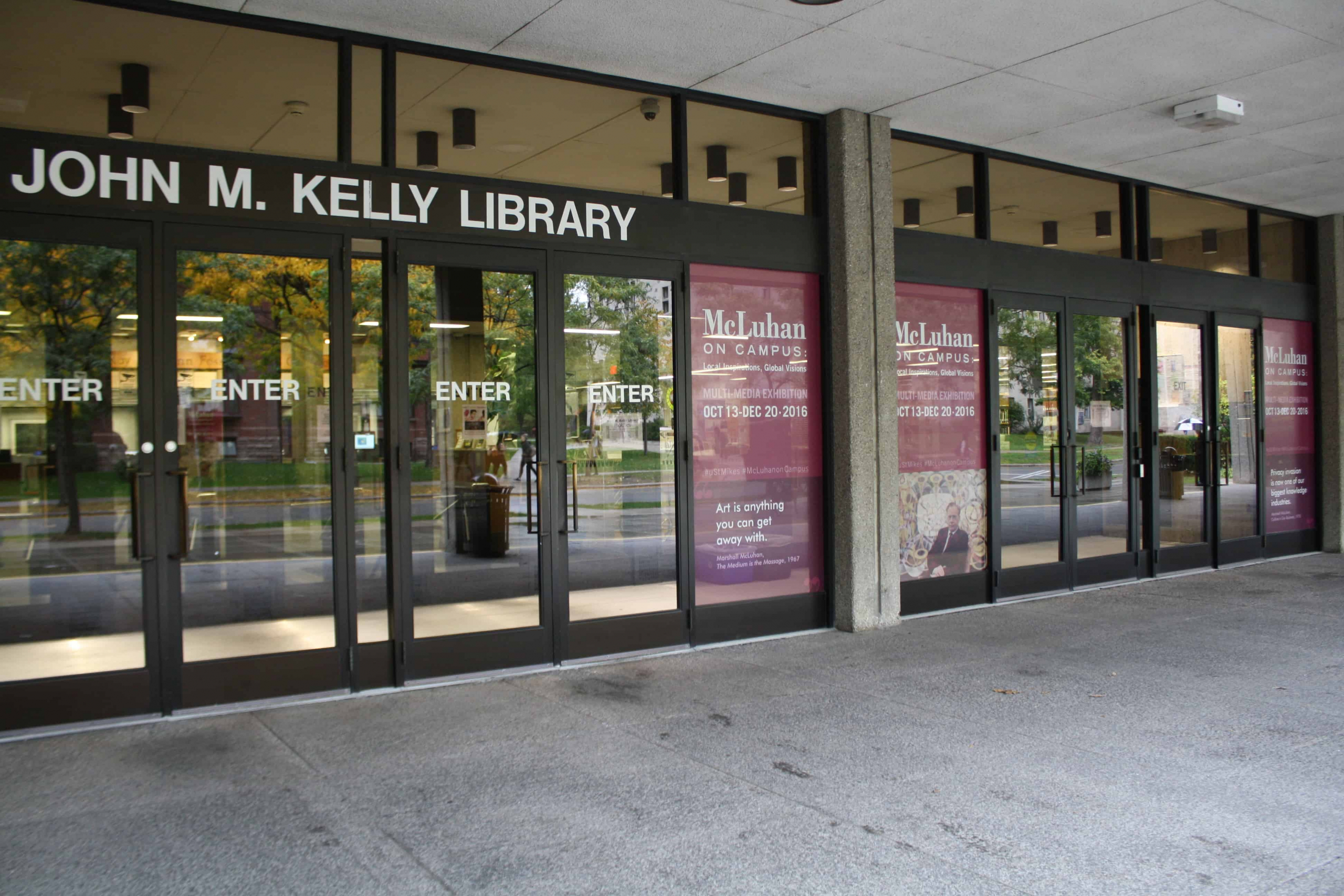In the midst of a seemingly endless series of exams, assignments, and other obligations, it’s understandable for students to start reducing the U of T experience to one based on survival. One can be focused on making it through the next week, the next month, and the next semester, without making strong connections to the things that make a major research university like U of T important.
Some experiences jolt us out of this reverie — they remind us of the importance of the work we’re involved in and that the research we’re surrounded by every day is actually significant.
From now until December 20, events like the Kelly Library’s current multimedia exhibition on the life of Marshall McLuhan have the potential to provide these experiences. McLuhan on Campus: Local Inspirations, Global Visions displays items from the university’s collections on the professor and strives to document both McLuhan’s work as one of the university’s most prominent academics and his lasting effect on its programs.
McLuhan worked as a Professor of English from 1946 until just prior to his death in 1980. His writings, alongside those of Harold Innis who was also highlighted in the exhibition, were some of the most influential works in the development of media and communications theory. He also helped establish the university as a centre for media and communications research, first through the unofficial School of Communication research group, and later through the Centre for Culture and Technology, which still operates today as part of the Faculty of Information (iSchool).
McLuhan’s growing recognition on the international stage in the second half of the twentieth century — and eventual status as a household name — is reflected in the objects on display. Correspondences with famous academics and early drafts of seminal books and papers are displayed, alongside McLuhan’s interviews in Playboy, Newsweek, and The New York Times Magazine.
Besides academic work and press clippings, the exhibition featured artifacts from McLuhan’s personal life and professional consulting career in advertising. Displays that depict the development of television and radio were also included, as were a series of zine-like, ad-hoc newsletters that he published.
Signs around the building commemorate McLuhan’s many enduring aphorisms and turns of phrase about art, media, and technology like the “global village” and “the medium is the message.” There are also quotes from his contemporaries. In a nod to the fact that his quotes were often misattributed or popularized by others, such as Andy Warhol’s “art is anything you can get away with” and Timothy Leary’s “turn on, tune in, drop out” mantra which reputedly originated with McLuhan, none of the signs display an author. A discreet bibliography on the ground floor notes the origin of each text.
Of course, a McLuhan exhibition would not be complete if it didn’t incorporate some kind of new medium, and multimedia terminals mounted in the middle of the library satisfied this need. The touchscreen devices serve as an index for parts of the university’s McLuhan collection; video and audio interviews were accessible through them. They proved to be the most thought-provoking elements of the entire exhibition.
While many of his ideas have always been controversial, it’s difficult to deny how prescient McLuhan’s work is, especially after seeing recordings of his lectures and speeches from the 1950–1960s about much of what has come to be today’s digital media landscape.
As an exhibition installed in a mixed-program public space, McLuhan on Campus is a little physically awkward. Parts of the collection can be difficult to view in detail without disturbing students studying at desks and tables nearby. Despite this, embedding the exhibition in a high-traffic space was appropriate and symbolic since media theory is still an esoteric subject, and McLuhan’s work is relevant to many students who otherwise might not go out of their way to see an exhibition on it. Showing it in the middle of a major library proves a deliberate and strategic method for exposing more people to work that can educate and inspire — many of us could probably use the jolt.


